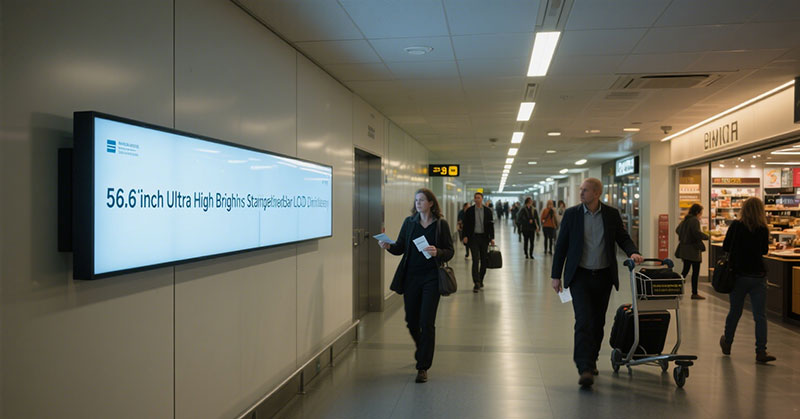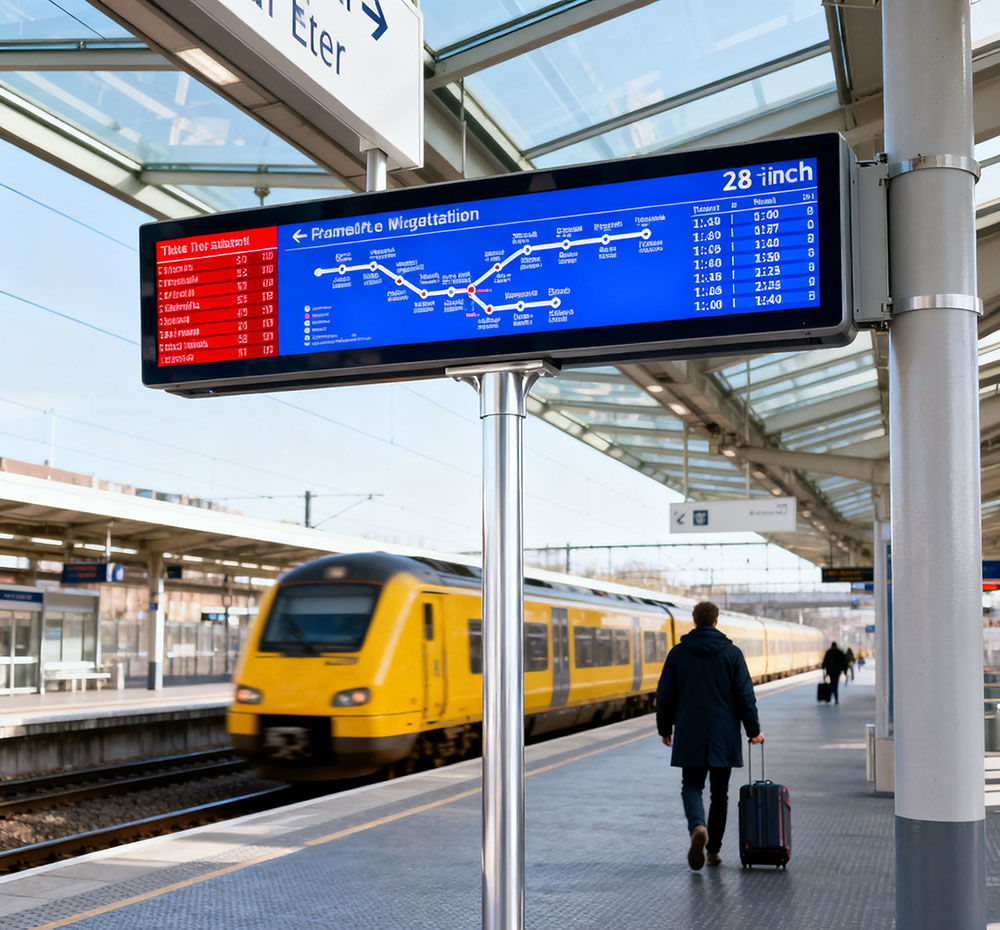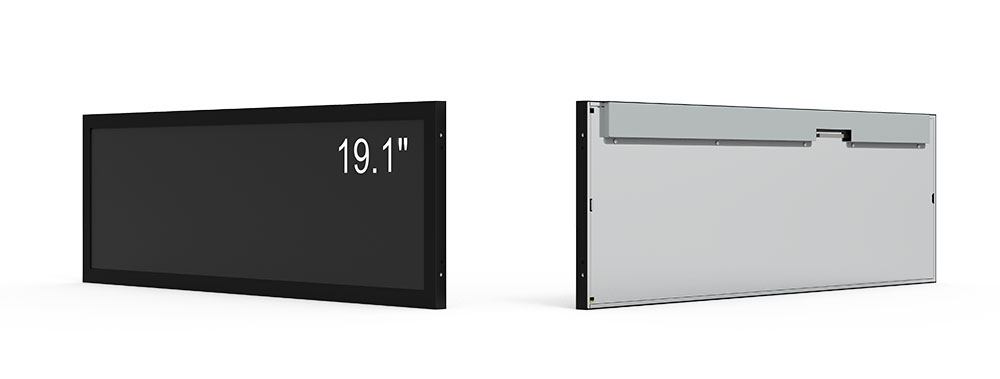Target audience: Transportation operators (urban rail, regional rail, long-distance and intra-city buses), system integrators, equipment manufacturers, and transportation planners.
1. What is a Passenger Information Display (PID)? Definition and Evolution
A Passenger Information Display (PIDS/PIS), also known as a Passenger Information System (PIDS/PIS), is an automated information system used to provide passengers with train/bus arrival times, delay notifications, transfer instructions, platform changes, emergency events, and service announcements. A PIS can convey information through both visual means (screens, LEDs, scrolling text) and voice announcements, distinguishing between static information (timetables, transfer maps) and real-time information (estimated arrival/delay information based on vehicle location). Modern PIS has evolved from a simple platform timetable to an integrated, cascaded system: front-end display hardware + a central information platform + a real-time location/dispatching data source + a content management and distribution network (CMS/MDM).

2. Market and Trends (Why Investing in a PIS Now is Necessary)
Multiple industry studies consistently indicate that PIS is a core investment area for transportation informationization and improving the passenger experience. Industry reports indicate that the global Passenger Information Display market continued its rapid growth in the 2020s. Reports estimate that the market size will reach billions of dollars by 2025, with a compound annual growth rate (CAGR) of 6%-14% over the next few years (reporting varies slightly). This growth is driven by urbanization, intelligent transportation systems (ITS), demand for real-time travel services, and advertising and commercial monetization. For operators, PIS is not only a key module for quality of service (QoS) and passenger satisfaction (CSAT), but is also increasingly viewed as a revenue generator for advertising and contextual content.
3. Typical Architecture and Key Technical Points (From System Design to Implementation)
Overall Architecture: Vehicle/Station Display Unit ←→ Edge Gateway or Onboard Control Unit ←→ Operations/Dispatch Center (Data Fusion and CMS) ←→ Remote Operations and Analysis Platform Core requirements include low latency, high reliability, support for offline caching, and network-disconnect recovery.
Data Source Integration: AVL (Automatic Vehicle Location), ATP/CTC dispatch data, ticketing and passenger flow sensors, and external events (such as weather and road control) must all be integrated and prioritized for delivery to the PIS. Real-time performance and consistency (a single source of truth) are core to the system design.
Display Hardware Specifications: Outdoor platforms require high brightness (readable under strong sunlight), industrial-grade temperature resistance (extreme cold and heat), waterproof and dustproof (IP rating), and vibration and electromagnetic interference resistance. Onboard terminals emphasize lightweight, low power consumption, and impact resistance. The screen type (LED, LCD, OLED) is selected based on the installation environment, energy budget, and maintainability.
Communications and Networks: LTE/5G, dedicated networks (train Ethernet), Wi-Fi, or fiber optics are commonly used for train-to-ground communications. Onboard/onboard gateways must comply with railway communication standards (such as IEC 61375) to ensure compatibility and robustness of train network interconnection.
Software Layer: The Content Management System (CMS/MDM) is responsible for program scheduling, template management, multilingual support, permissions, and auditing. The real-time scheduling layer is responsible for quickly mapping AVL/scheduling changes into passenger-readable information (estimated arrival time, train number changes, delay reasons, etc.). The system must have high availability (redundancy) and security (authentication, encryption, and OTA update verification).

4. Industry Standards, Compliance, and Reliability Testing (Why Follow Standards)
In the railway and urban rail sectors, reliability and interoperability are guaranteed by multiple standards and practices: for example, IEC 61375 (Train Ethernet/Onboard Communication Systems), as well as national/regional environmental compatibility regulations and safety standards (fire protection, EMC, electromagnetic compatibility, IP protection ratings, etc.). Adherence to standards significantly reduces system integration risks and facilitates long-term maintenance and component replacement. System acceptance typically includes environmental (temperature, humidity, and vibration), EMC, lifespan (MTBF/MTTR), and scenario-based testing (network recovery, broadcast priority, and emergency evacuation procedures).
5. Key Points from Successful Case Studies (Implementation Experience and Reusable Lessons)
Multi-functional Station/Metro Projects: Demonstrating municipal projects across multiple locations, large screens centrally display transfer information and integrate it with mobile devices (web/app) and voice announcements, significantly improving transfer efficiency and reducing complaint rates (see the London Underground and multi-city projects for examples). Large screens are often integrated with advertising platforms, achieving a partial return on investment.
Full-Train Onboard PIS Deployment (Doha Metro, Qatar): Using high-resolution panels and an onboard PC solution for arrival information, maps, and commercials, this demonstrates the feasibility of highly reliable industrial panels in the metro environment. These projects emphasize onboard power supply anti-interference, heat dissipation, and panel lifespan.
Commercialization of RTPI (Real-Time Passenger Information): Several vendors have achieved integrated "platform + onboard + mobile" distribution through customized electronic boards and embedded firmware, significantly reducing errors and increasing passenger confidence in arrival accuracy. Key technical considerations include GPS/AVL data cleansing and delay compensation strategies.

6. Design and Implementation Recommendations (Actionable Strategies for Operators)
Passenger-centric Content Prioritization: Prioritize safety/emergency information and arrival announcements. Advertisements/rollouts should be inserted during low-usage periods or when the screen is idle. Standardize visual templates, use large font sizes, and high-contrast color schemes to improve readability.
Multi-channel Access: Integrate PIS with mobile devices (app/WeChat/webpage) and voice announcements to meet the needs of diverse passengers (visually impaired, foreign-speaking passengers, and the elderly), ensuring accessibility compliance.
Redundancy and Local Offline Strategies: Key platform/train display units must have local caching and automatic fallback mechanisms to prevent "black screens" caused by network fluctuations.
Maintainability and Operation Monitoring: Introduce remote monitoring (heartbeat, temperature, power status, display fault detection) and automatic alarms. Establish SLAs (onsite response time, spare parts turnover) and spare parts inventory strategies.
Data Quality Governance: Establish AVL data cleansing rules (filtering out GPS jitter and verifying stop times), and use data quality indicators as KPIs (e.g., arrival prediction error and system availability).
7. Technical Optimization Points (for High Concurrency and Real-Time Performance)
Edge Computing Priority: Decentralize prediction models and basic display logic to the edge (on-board gateways or station edge servers) to reduce central dependencies and latency.
Differential Updates and Template Rendering: In bandwidth-constrained environments, use differential data (transmitting only changed fields) and client-side template rendering to save bandwidth and improve rendering consistency.
Priority Queues and Policy-Based Routing: Emergency broadcasts and scheduling priority commands must interrupt regular content playback, with local policy modules implementing rapid switching.
Health Check and Rollback Mechanism: All OTA upgrades must support grayscale, rollback, and signature verification to prevent widespread system unavailability due to erroneous updates.

8. Evaluating ROI and Measuring Benefits (How to Justify the Investment to Management)
Service Quality Improvement: Improve passenger satisfaction by reducing missed trains, shortening transfer times, and reducing information uncertainty (quantifiable as an increase in NPS/CSAT).
Operational Efficiency: Real-time information helps dispatchers adjust schedules and resource allocation, reducing empty runs and delay costs.
Advertising/Monetization: Platform and in-car screens can incorporate programmatic advertising or local business partnerships to generate long-term revenue for operators.
Safety and Compliance Value: The ability to quickly announce emergency situations can significantly reduce secondary accident risks and legal liability.
9. Implementation Roadmap (From Small-Scale Pilot to Network-Wide Rollout)
Requirements Research and Process Streamlining (1-2 Months): Determine information types, priorities, language requirements, interfaces, and permissions.
Pilot Deployment (3-6 Months): Select one to three representative stations or a train for hardware and software integration to verify AVL data, communication links, and the CMS. Case data is used to optimize prediction algorithms and templates.
Phased Expansion (6-18 months): Expand platform and vehicle resources based on priority, and establish an operations and maintenance (O&M) and spare parts system.
Overall Operations and Optimization (Continuous): Continuously optimize arrival predictions, content delivery strategies, and fault response processes based on monitoring data.

10. Common Challenges and Risk Management (Pitfalls that Must Be Planned For)
Data Inconsistency: Inconsistencies in multiple systems (ticketing, dispatching, and third-party data) can lead to information conflicts. Establishing master data governance is a top priority.
Positioning Accuracy: GPS fails in tunnels and urban canyons, requiring compensation strategies (odometers and on-board sensor fusion). Unstable positioning data directly impacts the reliability of arrival ETAs.
Hardware Aging and Environmental Issues: Strong sunlight, temperature fluctuations, and vibration accelerate the lifespan of panels and backlights. Selecting industrial-grade displays and conducting rigorous lifespan testing are crucial.
Privacy and Compliance Risks: When integrating cameras or passenger analytics into a PIS, local privacy regulations must be adhered to and data anonymization must be implemented.
11. Conclusion and Implementation Recommendations (Three Key Points for Decision Makers)
Focus on service first, then commercialization: Prioritize ensuring information accuracy and reliability, then plan advertising and commercialization paths. This will achieve long-term benefits in operational reputation and passenger trust.
Choose a modular and scalable platform: Avoid being locked into a single vendor, and preferably support open APIs and standard protocols (such as IEC 61375) to achieve ecosystem compatibility.
Determine quantifiable KPIs from the pilot: Using prediction error, system availability, passenger satisfaction, and advertising revenue as core indicators, gradually increase funding and network-wide rollout.
Ask a quote for the latest price and one of our team members will respond as soon as possible.
